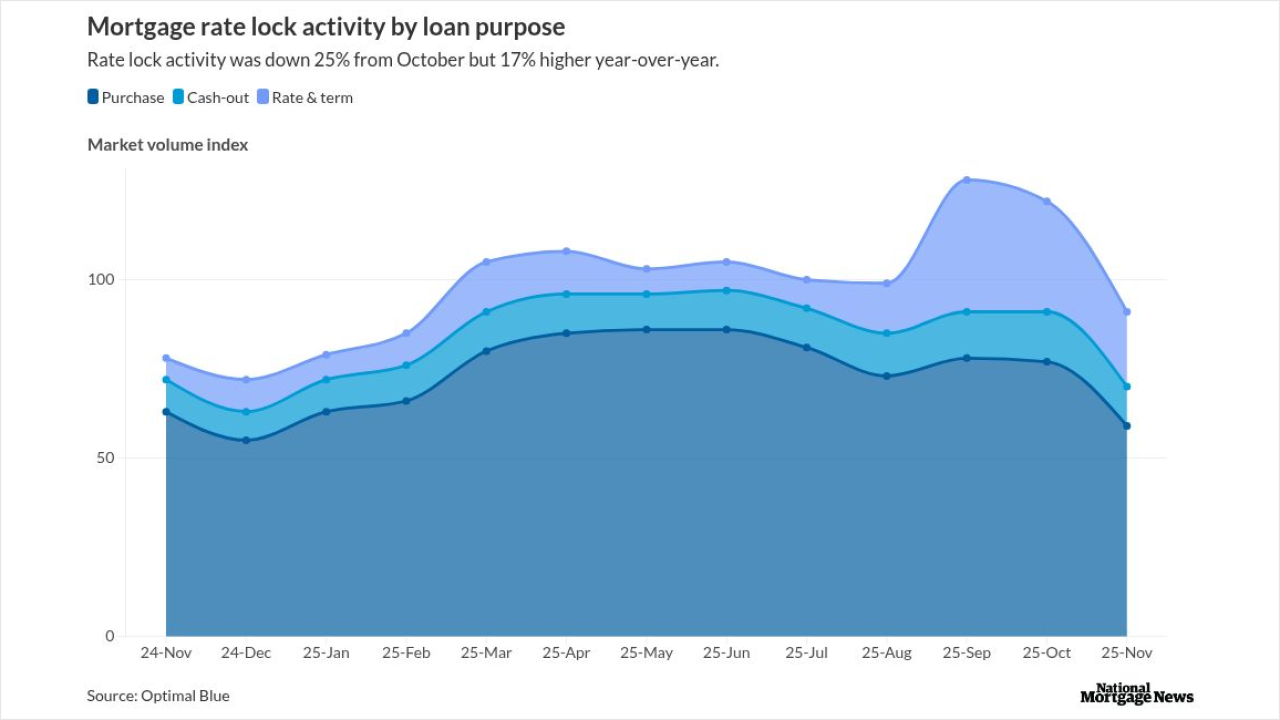Fannie Mae is considering sharing more risk with the private sector to offset the pressure that the implementation of the Current Expected Credit Loss accounting standard could put on its earnings.
"We are evaluating selling additional risk via our various credit-risk transfer programs that may enable us not only to reduce earnings volatility associated with CECL, but also to optimize returns and capital levels in normal and stressed scenarios," Celeste Brown, Fannie's chief financial officer and executive vice president, said during the government-sponsored enterprise's earnings call.
The new accounting standard could force Fannie to take a draw from the Treasury after its implementation in 2020, Brown said, confirming
"During times of economic stress our allowance for losses will build faster than under the current accounting standards but our earnings should also recover faster as conditions improve," she said.

Current Freddie Mac CEO Donald Layton, who departs in June, has said Freddie has been working on modeling CECL's impact but is not done doing so yet.
Ways Fannie is considering shedding more risk to offset CECL include possibly creating a structured risk-sharing vehicle for its multifamily operation similar to the Connecticut Avenue Securities credit-risk transfer structure used by its single-family business. That may help Fannie address a discrepancy in the percentage of multifamily risk it transfers
The private sector could absorb up to $48 billion of Fannie's credit losses and almost $44 billion of Freddie's through structured notes or insurance-based transactions, according to the Federal Housing Finance Agency's 2018 Scorecard Progress report.
Another way the GSEs could lessen CECL's impact would be by strengthening other aspects of their earnings. But both recorded weaker results on a year-to-year basis in the first quarter.
Fannie generated $2.4 billion in net and comprehensive income during the fiscal period, down from $4.3 billion in net income and $3.9 billion in comprehensive income
"This was behind our $3.8 billion forecast, and the quarterly run rate of $4 billion from 2018, as net interest income was lower, expenses were elevated and there was an $800 million fair value loss," noted B. Riley FBR analysts Randy Binner and Ryan Aceto in a report.
A reduction in the transfer of loans into the held-for-sale category contributed to the relative declines in Fannie's earnings. Changes in real and forecast home prices and interest rates also played a role, as did a drop in net interest income as prepayments fell and amortization income decreased.
Freddie generated $1.4 billion in net income and $1.7 billion in comprehensive income in the first quarter, down from $2.9 billion and $2.2 billion, respectively, a year ago, but up from $1.1 billion in net income and $1.5 billion in comprehensive income the previous quarter.
While both GSEs' earnings decreased year-over-year, they were able to pay all of their comprehensive income out to the Treasury in the form of a dividend during the first quarter. That compares favorably to last year, when one-time adjustments made as a result of tax reform depleted their capital bases below the required $3 billion minimum each has.
At that time, Fannie returned a little under $1 billion to the Treasury despite earning four times that much, and Freddie Mac did not return a dividend to the Treasury at all. But because Freddie's results were positive, it did not have to request a draw from the Treasury.




